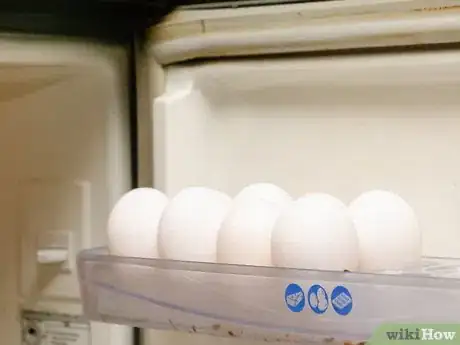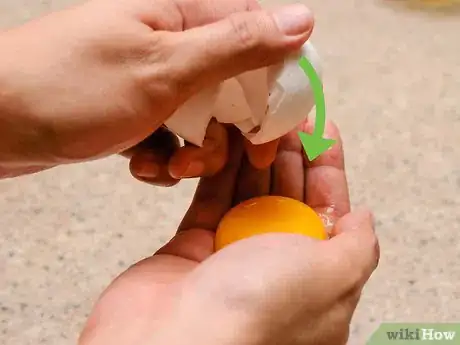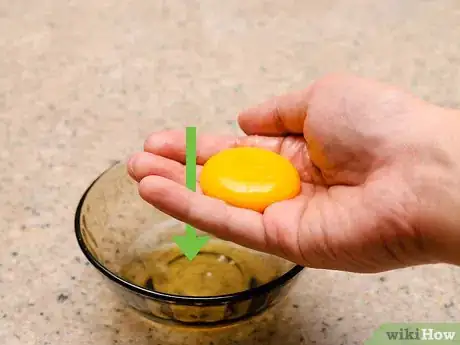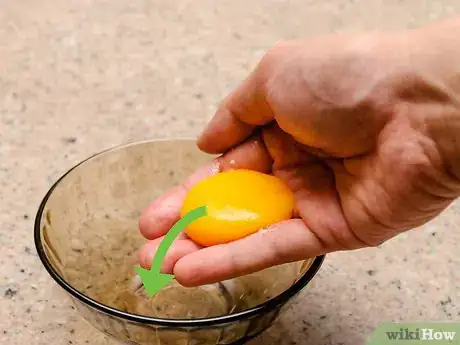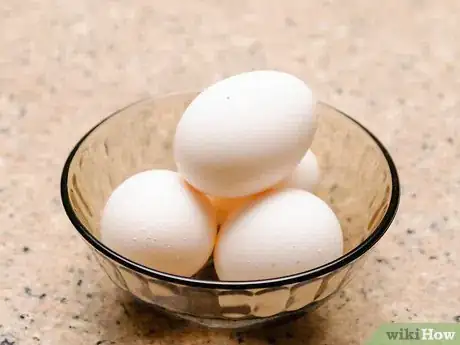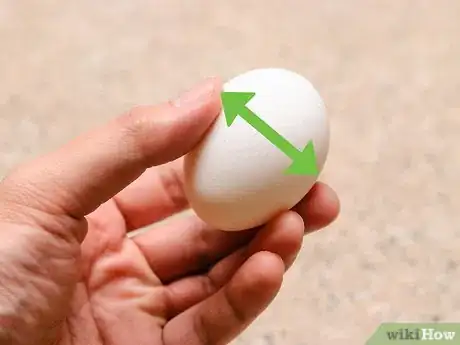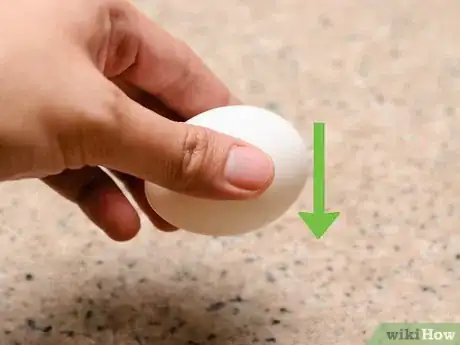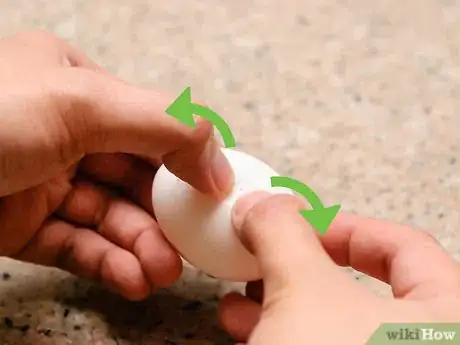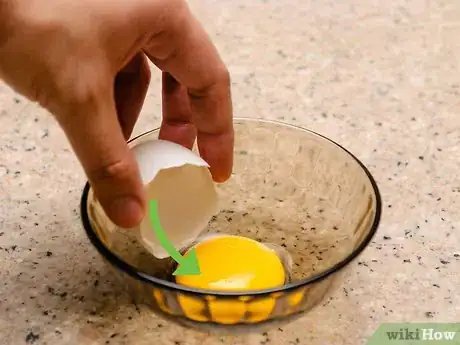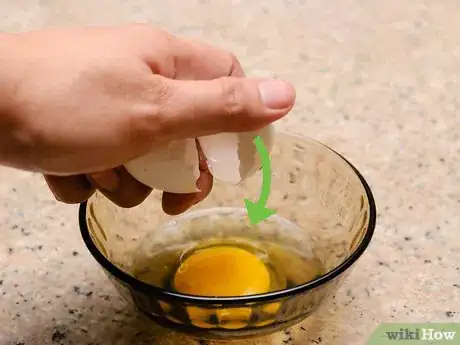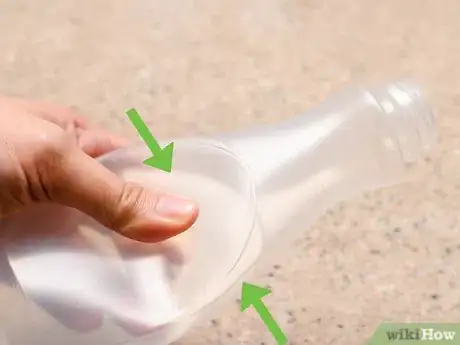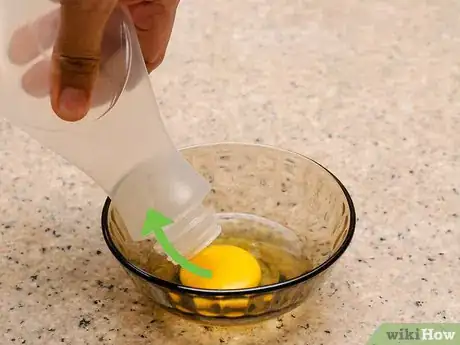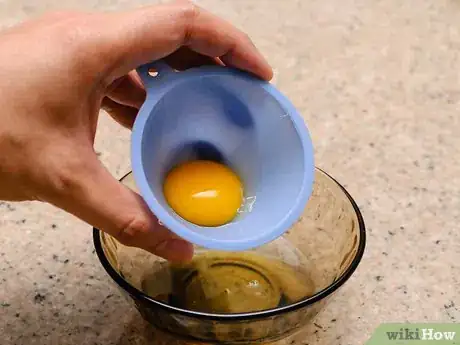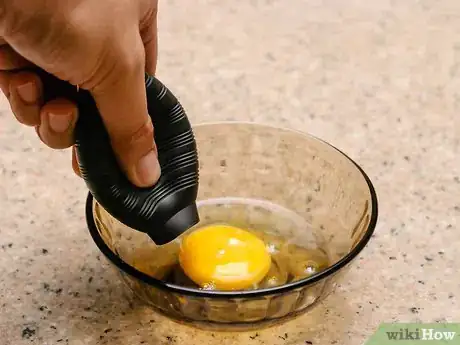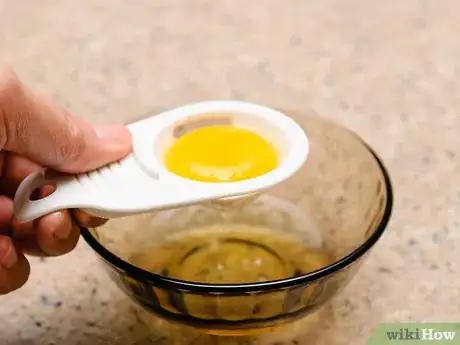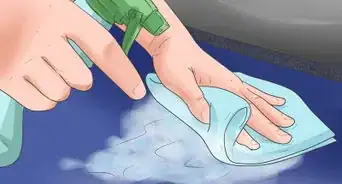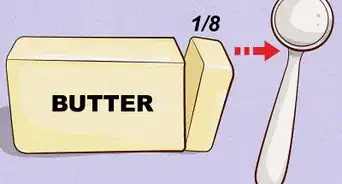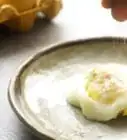This article was co-authored by Jennifer Levasseur. Chef Jennifer Levasseur is a Personal Chef and the Owner of The Happy Cuisiniere based in Breckenridge, Colorado. She has over 12 years of culinary experience and specializes in Mountain and Contemporary Rustic cuisine. Moreover, she can craft dishes and modify menus to accommodate dietary restrictions, such as gluten-free, vegetarian, vegan, pescatarian, and dairy-free diets. In addition to a Bachelor’s degree in Marketing and Management from the University of Houston, Chef Jennifer holds Associate’s degrees in Culinary Arts and Baking & Pastry Arts from Houston Community College.
There are 11 references cited in this article, which can be found at the bottom of the page.
wikiHow marks an article as reader-approved once it receives enough positive feedback. This article received 11 testimonials and 100% of readers who voted found it helpful, earning it our reader-approved status.
This article has been viewed 807,608 times.
Many recipes specifically call for egg whites or yolks, and many people make egg-white-only dishes to reduce cholesterol. Whatever your reasons, there are plenty of tips that will help you avoid a painful separation.
Steps
Separating by Hand
-
1Wash your hands thoroughly. Scrub your hands with hot, running water and unscented soap, then rinse them off. Besides washing away dirt, this will remove skin oils that can prevent whites from fluffing.[1]
-
2Chill the eggs (optional). Cold yolks are less likely to break than warm ones, and easier to separate from the white.[1] If you store your eggs in the fridge, separate them right after taking them out. If you store them at room temperature, you can put them in the fridge half an hour before you cook — though it's not a big deal if you forget.
- Most recipes call for whites or yolks at room temperature. You can warm chilled, separated egg by placing the bowls of yolks and whites in a pan of warm water (not hot) for 5–10 minutes.[2]
Advertisement -
3Set up three bowls. If you're only separating a couple eggs, you only need two bowls. But if you're separating many eggs, get another bowl to crack the whole egg into. This way, if you break the yolk, or the egg is spoiled, you've only lost one egg instead of ruining a whole bowl of whites.[3]
- The faster method is to crack all the eggs into one bowl and lift out the yolks one by one, separating your fingers so the whites drop back into the bowl. It's best to leave this until you've had some practice, since one broken yolk will ruin all your whites.[5]
-
4Crack the egg. Crack the egg carefully into the first bowl, taking care not to break the yolk. If you can, you can crack the egg gently, then drop it right into your cupped palm instead — or even crack it in one hand.
- If you have trouble with shell fragments in your egg, try cracking it against a flat countertop instead of the edge of the bowl.
- If a bit of shell falls into your egg, pick it out with your fingers, without breaking the yolk. It's easier to get it out with half of the shell, but that increases the risk of salmonella contamination.
-
5Let the whites drip through your fingers. Reach into the bowl and cup a yolk, lifting it up. Move your hand over to the second bowl and separate your fingers slightly, letting the whites drip through. Use your other hand to gently pull down thick strands of white if it doesn't fall on its own. If there is still white attached to the yolk, pass it back and forth between your hands until most of the white has dripped into the bowl below.
-
6Drop the yolk into the last bowl. Move the yolk over to the last bowl and drop it in gently. Repeat the process with all your other eggs.
- It typically doesn't matter if the yolks have a little bit of white stuck to them. As long as the bowl of egg whites is 100% free of yolk, you're fine.
Separating with the Shells
-
1Understand the risks. Many health experts in the US and Australia recommend avoiding this method, since harmful bacteria on the shell could get in contact with the egg.[6] The risk of contamination is much lower in the EU, which has a very effective anti-salmonella program.[7] If you're concerned about the risk, use one of the other methods instead.
- Cooking yolks or whites until firm makes them much safer.[8] If you plan to serve the eggs runny or raw, consider another separation method.
-
2Chill the eggs (optional). Room temperature eggs have runnier whites, which can make this method messy and difficult. Work with eggs straight from the fridge instead.
-
3Imagine a line going around the "fattest" part of the egg. This is where you want to make the cleanest crack you can manage. The key with this method is to crack the egg evenly, so you can easily transfer the yolk between the two halves.
-
4Start the crack on the egg. Tap the center of the egg gently against a hard object, so a crack forms across about half of the egg. The edge of a bowl is a good surface for getting two equal halves. The edge can also break off shell fragments into your white, though, so a flat counter might be better if your eggs have thin shells.[9]
-
5Carefully break apart the shell. Hold the egg over a bowl in both hands with the crack facing upward and the wide end tilted down. Slowly pull apart the two halves with your thumbs, until the egg breaks into two halves. Because the egg is tilted, the yolk should fall into the lower half.
-
6Transfer the yolk from shell to shell. "Pour" the intact yolk back and forth between the two halves of the shell. Repeat this about three times, while the white drips over the side of the shell and into the bowl below.
-
7Drop the yolk in another bowl. Drop the yolk in another bowl once there are only tiny bits of white stuck to it. If you have more eggs to separate, consider using a third bowl, so a messy crack doesn't drop shell shards or broken yolk into your whites. Separate each egg over this third bowl, then empty the bowl into the other whites bowl before you move on to the next.
Using a Plastic Bottle
-
1Carefully crack the egg onto a shallow bowl. Start with one at a time, so a broken yolk doesn't ruin your whole plate. Keep a second bowl on the side for the yolks.
-
2Squeeze some of the air from a clean plastic bottle. Hold the bottle in this partially crumpled position.
-
3Pick up the yolk. Place the mouth of the bottle on top of the egg yolk, and slowly release your grip. The air pressure will push the yolk into the bottle. This might take some practice; releasing too much or too quickly will pull up some of the egg whites as well.[10]
-
4Transfer the yolk to the other bowl. Carefully keep the bottle compressed so the yolk stays inside the bottle. Move the bottle over to the other bowl and let go to drop in the yolk.
- Tilting the bottle a little may help.
Using Other Kitchen Tools
-
1Crack the egg into a funnel. Put the funnel into the mouth of a bottle, or have a friend hold the funnel over a bowl. Crack the egg into the funnel. The whites should pass through the small opening while the egg yolk remains in the funnel.
- If the whites get stuck over the yolk, tilt the funnel so they can pass through.
- This might not work well for fresh eggs, which have thick ropy sections of white.
-
2Use a turkey baster bulb. Unscrew the bulb from the baster handle, and you have a suction device the right size for grabbing yolks. Crack the egg onto a plate, then squeeze and let go to pull the yolk up into the baster.[11]
-
3Crack the egg onto a slotted spoon. Shake the spoon gently side to side, then up and down, and the whites should dribble through the slots.
-
4Buy an egg separator. You can buy a specialized tool for separating eggs from online stores, or from some kitchen supply stores. These come in two main types:
- A small plastic cup surrounded by slots. Crack the egg into the cup, and rotate the separator so the egg whites fall through the slots.
- A small suction device. Crack the egg onto a plate, squeeze the suction device, put it over the yolk, and release to suck up the yolk.
-
5Finished.
Community Q&A
-
QuestionWhat can I do with the yolks when I get them separated? The recipe I have only called for one egg, so what can I do then?
 Community AnswerFreeze it or use it for a recipe that only calls fort egg yolks (such as cookies or advocaat). If you want to freeze it you'll have to add a bit of sugar or salt, depending on whatever you'll want to use it for in the future.
Community AnswerFreeze it or use it for a recipe that only calls fort egg yolks (such as cookies or advocaat). If you want to freeze it you'll have to add a bit of sugar or salt, depending on whatever you'll want to use it for in the future. -
QuestionHow do I take the raw egg out of a shell?
 Community AnswerCrack the egg into a small bowl and then use a spoon to scoop the yolk out. If some of the membrane stuff is hanging on, you can tip it a little and it should fall right off. You can crack several eggs into the bowl and then go back and do all the yolks. It's best to use a tablespoon and not the smaller size spoon. That way, the entire yolk will fit into the spoon without cutting into it.
Community AnswerCrack the egg into a small bowl and then use a spoon to scoop the yolk out. If some of the membrane stuff is hanging on, you can tip it a little and it should fall right off. You can crack several eggs into the bowl and then go back and do all the yolks. It's best to use a tablespoon and not the smaller size spoon. That way, the entire yolk will fit into the spoon without cutting into it. -
QuestionIf bits of yolk drop into the whites, do I have to start over and discard the whites?
 Community AnswerEgg yolks contain high amounts of fat. Once an egg yolk breaks into your whites, you have to start the separation anew, because it can prevent your foam from forming.
Community AnswerEgg yolks contain high amounts of fat. Once an egg yolk breaks into your whites, you have to start the separation anew, because it can prevent your foam from forming.
Warnings
- Wash your hands before and after handling raw eggs to avoid any possible bacterial contamination. Clean all surfaces that will come into contact with the eggs before and after the separation process.⧼thumbs_response⧽
References
- ↑ 1.01.11.2http://www.simplyrecipes.com/recipes/how_to_separate_eggs/
- ↑ http://bakingbites.com/2011/02/how-to-bring-eggs-to-room-temperature/
- ↑ https://www.thekitchn.com/fearless-baking-3-tips-for-sep-118117
- ↑ https://www.craftybaking.com/howto/eggs-separate-or-separating-techniques
- ↑ http://www.abc.net.au/health/thepulse/stories/2013/12/19/3914780.htm
- ↑ http://www.eurosurveillance.org/ViewArticle.aspx?ArticleId=20804
- ↑ http://www.fda.gov/Food/ResourcesForYou/Consumers/ucm077342.htm
- ↑ http://www.thekitchn.com/can-you-use-an-empty-water-bottle-to-easily-separate-eggs-putting-tips-to-the-test-in-the-kitchn-200436
- ↑ http://www.cookistry.com/2012/12/egg-separator-hack-better-than-water.html
About This Article
To separate an egg by hand, crack the egg into a bowl, taking care not to break the yolk. If any shells fall into the bowl, use your fingers to remove it. Gently lift the yolk out with your cupped hand and allow the whites to drip through your fingers back into the bowl, using your other hand to help loosen the egg whites if you need to. Place the yolk in a second bowl when all of the white is removed. Keep reading the article if you want to learn how to separate the eggs using the shells!

